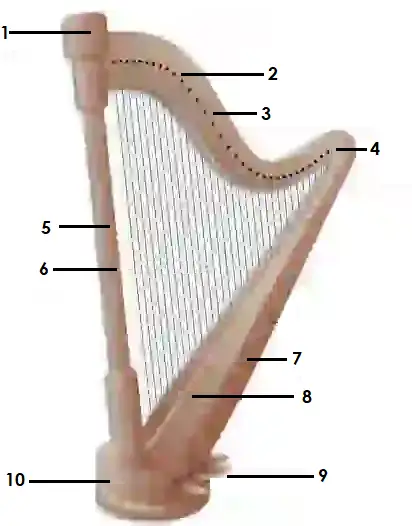Construction and function of the Harp - Philipp Dangas
Construction and function of the Harp
The harp has the shape of a triangle and consists of the following main parts:
- 1st foot (pedestal or pedal set)
- the instrument stands on it and at the same time contains the pedals.
- 2. Resonance box (body)
- it is about 1.25 m to 1.50 m long and widens from top to bottom. A strip of hard wood runs down the middle to which the strings are attached.
- 3.Neck (upper leg of the triangle)
- on it are the tuning pegs for attaching and tensioning the strings and the turntables for changing the tuning.
- 4.Barón rod (front rod)
- connects the neck to the pedestal. Absorbs the tension of the strings.
A very nice sample of the harp sound
Download size: 60.4 kilobytes
Download size: 60.4 kilobytes
Table summary of the components of a harp
The following table lists the components of the harp shown. Pedal box, resonance box, neck, front rod and strings briefly described.

The structure of a harp in large representation
The components of a harp
- Head
- Tuning pins
- Neck
- Knee
- Column
- Strings
- Body
- Soundboard
- Pedals
- Foot
Internal search function
| Name | Value | Delete |
|---|